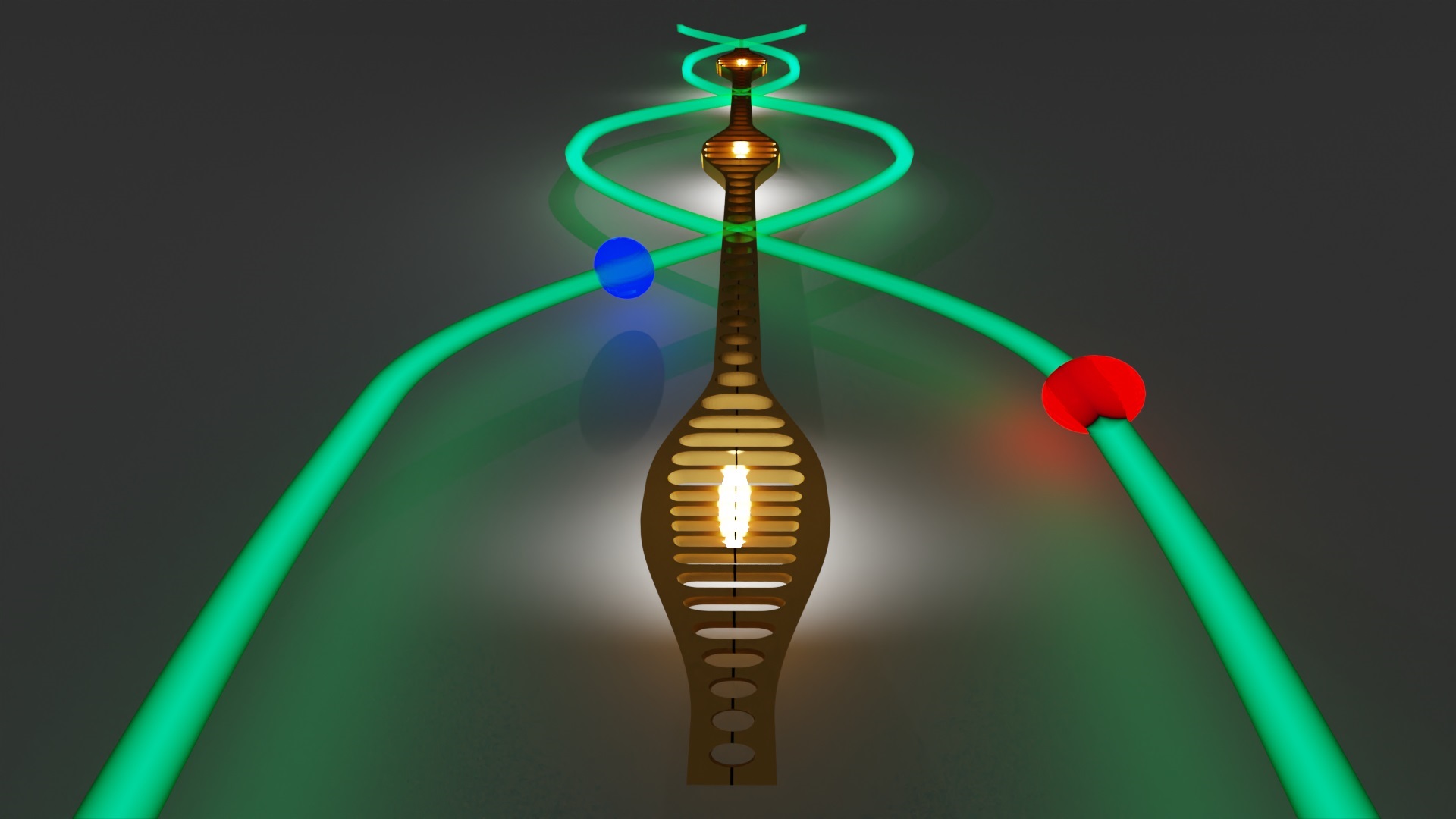24 NOVEMBER 2022
Physicists from the Gröblacher lab at TU Delft have built a device that can link different quantum devices and qubits to each other. This device, a silicon chip with vibrations traveling through it, functions as a network between quantum devices. This marks the first time that scientists are able to store as many qubits as they’d like within a very compact area on this type of chip. They’ve published their findings in Science Advances.
The network that Simon Gröblacher and first co-authors Amirparsa Zivari and Niccolò Fiaschi built consists of waves travelling through a quantum chip. These waves are called phonons; mechanical vibrations inside the chip. Phonons are useful particles for connecting different types of quantum devices, because they can couple to almost all other types of quantum systems, such as to photons (light particles) or electrons. You can imagine phonons as the vibrations made by a drum, Fiaschi explains: “If there were no phonons, the drum would be perfectly still. If you start adding phonons, you’re adding energy to the system and the drum starts to vibrate, as if it were creating a quantum sound.”
In order to transmit quantum information, you need an entangled system; a type of inseparable bond between quantum particles. Zivari: “Entanglement is the main resource for quantum information and communication. We created a traveling entangled state on our chip, which is very useful for connecting two qubits. But we’ve also shown that the phonons travelling through our chip are entangled with photons, light particles. We can use these photons to transfer information over long distances, which means the information is not just stored on our chip, but we could in principle also send it to another city with an optical fibre.”
Storing many qubits
While researchers have previously shown the potential of phonons for storing quantum information, those systems are usually quite hard to scale up to multiple qubits. Besides, in previous studies with traveling phonons, the waves were not properly confined on the chip. Using a waveguide, the physicists now managed to send the vibrations along a precise path inside the chip. “For the first time, we can in principle store as many qubits as we want in a very compact area”, says Zivari.
Connecting different quantum devices
According to Zivari and Fiaschi, building a quantum processor and network from different types of quantum systems would be the most efficient option. “For example, the computation or CPU of the computer could most likely be done by superconducting qubits, but spins – the tiny magnets of quantum particles with an extremely long lifetime – could store information and serve as the computer’s memory”, Fiaschi says. “To make that happen, we would have to connect the memory to the CPU and link different types of quantum devices and qubits to each other. Phonons are an ideal candidate for connecting all these different systems.”
Zivari: “Creating a link that allows two quantum devices to talk to each other is very challenging, but that’s what we want to achieve. So I am very excited that we are now one step closer to interconnecting different quantum devices and qubits.” Now that the research group has managed to control single phonons and guide them along a specific path, the next steps are to build a beam splitter to route the phonons into different paths on a chip, and a phase shifter to change the state of the phonon while it’s traveling on its path. “These are the three main components that we will need in order to have full control and be able to conduct complex quantum experiments with phonons on a chip”, Gröblacher concludes.















